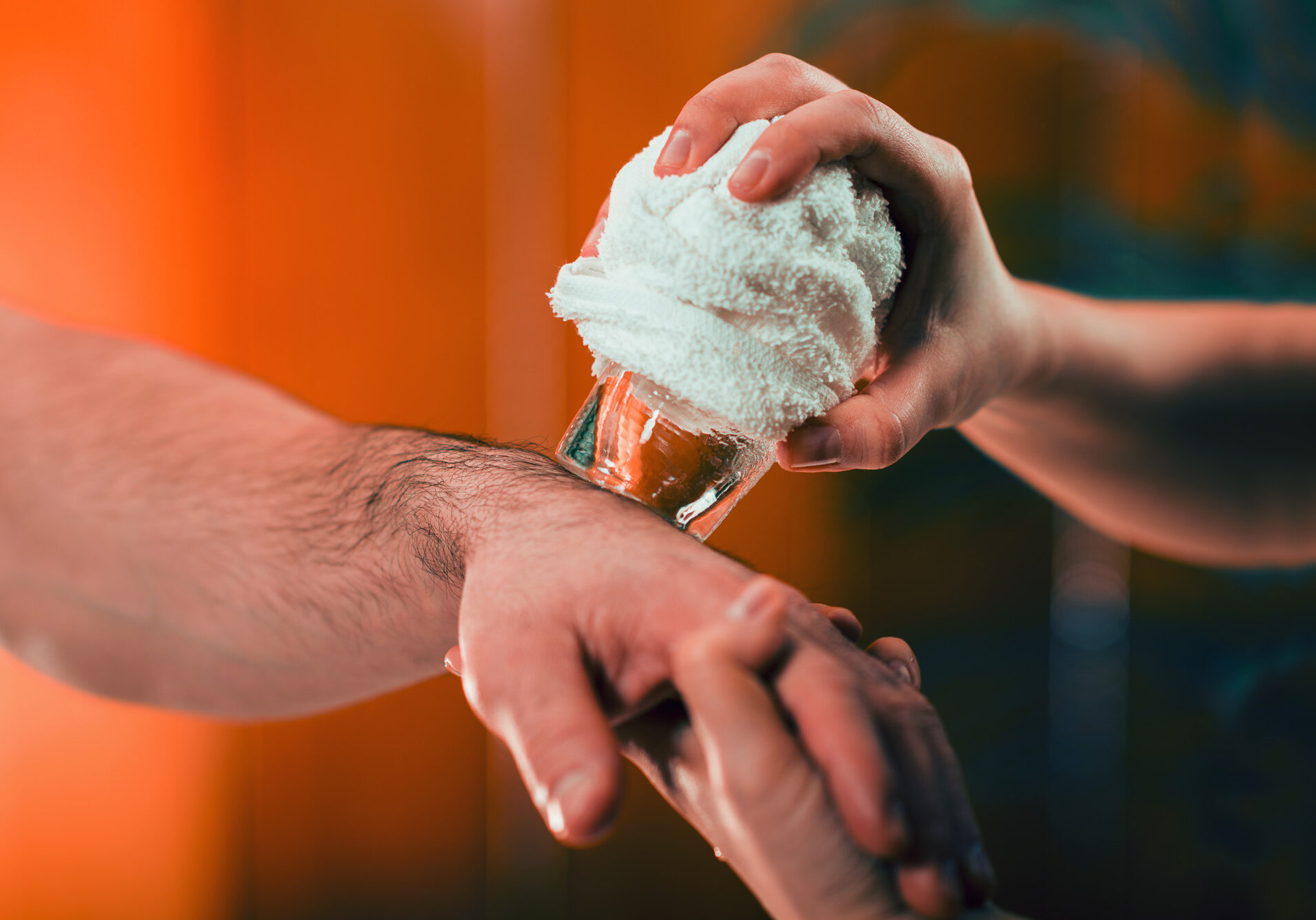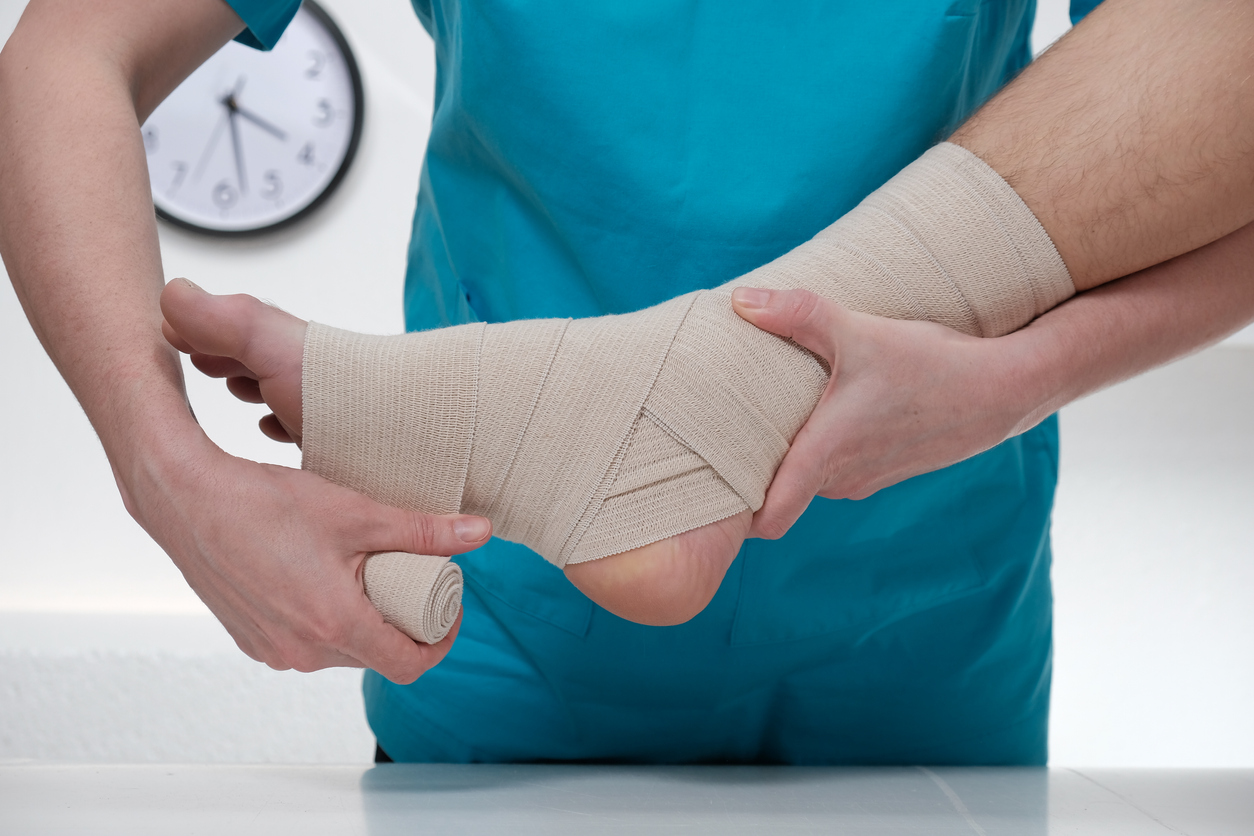Category: Physiotherapy Assistant
Employment Options to Explore After Physiotherapy Assistant Training
April 02, 2024Physiotherapy assistants are responsible for facilitating the exercises and techniques prescribed by the physiotherapist for pain management and illness recovery with patients. During physiotherapy assistant training, you will cover fundamental principles that equip you to teach clients essential exercises, assist physiotherapists in providing aid, and write clear and concise client medical reports.
You will be able to efficiently assist clients with neurological conditions, neuromusculoskeletal conditions, cardiovascular problems, and respiratory issues. Due to the extensive training you will receive, you can choose from a variety of work environments during your physiotherapy assistant career.
If you want to learn more about your employment options after physiotherapy assistant training, continue reading!
[Infographic] Employment Options to Explore After Physiotherapy Assistant Training
Work in a Hospital Environment
The duties of Physiotherapist Assistants in a hospital setting include:
- Assisting with equipment, and interacting with patients.
- Assisting during physiotherapy sessions.
- Show patients how to use their mobility aids should they require them.
- You’ll help the physiotherapist rehabilitate a patient after surgery.
- Assisting patients with prescribed exercises.
- Writing reports and documenting vital progress.
- 27.5% of physiotherapists in Canada work in hospitals.
Physiotherapists assistants working in hospitals manage many responsibilities.
Work Directly for a Private Physiotherapist
Private physiotherapists require an assistant for all aspects:
- Private physiotherapists require assistance with the variety of services they offer.
- You will help patients with session setup and wrap-up.
- Advising and instructing patients accurately.
- Record and process patient recovery, documents, and files.
Working for a private physiotherapist will require you to utilize your training in a variety of tasks.
Rehabilitation Centres are a Great Option
Rehabilitation centres will allow you to aid in the patient’s recovery journey:
- Restoring a patient’s physical and sensory capabilities after an injury, illness, or disease.
- Aid in customized rehabilitation programs.
- Assist with prescribed movements and exercises, ensuring accuracy for optimal effect.
- Address other rehabilitation techniques specific to sports injuries, lung damage, loss of mobility, or a hip replacement, amongst others.
- For example, heart patient rehabilitation addresses strengthening the heart, and circulatory system.
Rehabilitation centres require physiotherapist assistants to help patients retain physical and sensory capabilities.
Sports Medicine Clinics Require Physio Assistants
Sports players require comprehensive physio treatments:
- Sports players, particularly high-calibre athletes, require physiotherapy treatment to maintain optimal health.
- As a physiotherapy assistant, you aid athletes in recovery, maintenance, and injury prevention.
- Facilitation of prescribed sports injury rehabilitation techniques.
Sports physiotherapists require assistants to help patients work through sports-related injuries and rehabilitation programs.
Long-term Care Facilities Provide a Different Opportunity
Long-term care presents a different angle of physiotherapy:
- Long-term care addresses patients whose conditions cannot be reversed or rehabilitated.
- Physiotherapists work to promote and maintain the current functionality of a patient, ensuring functional independence.
- Assist residents with prescribed care to prevent further deterioration.
- Assist patients with movement through exercises.
- Introduce and assist patients with required mobility devices.
Long-term care physiotherapist assistants assist physiotherapists in stabilizing a patient’s current condition.
Sources:
https://www.jobbank.gc.ca/outlookreport/occupation/4466
https://www.cihi.ca/en/physiotherapists#
https://work.chron.com/roles-physiotherapy-assistants-17166.html
https://crossroadsrecovery.co.za/what-do-rehabilitation-centres-do/
https://www.collegept.org/patients/what-is-physiotherapy
https://www.parcofontario.com/athletes-need-physiotherapy-sessions/
https://www.intercarealberta.com/wp-content/uploads/2020/10/Physiotherapy-in-LTC-Nov-2018.pdf
3 Common Injuries You May Encounter After Physiotherapy Assistant Training
November 11, 2022Injuries–they happen to all of us. But when they do, we want them to heal as fast as possible so that we can get back to our normal lives. Functional movement refers to a person’s ability to recruit the proper muscle groups and joints to complete a task effortlessly and painlessly. With injuries–even minor ones–our ability to move functionally can be impacted to a significant degree, stopping us from completing our daily tasks comfortably.
If you’re considering a physiotherapist assistant career, you’ll be helping many patients to improve their quality of life by administering treatments based on what the leading physiotherapist prescribes. Keep reading to learn about some of the most common client injuries you’ll encounter on the job.
1. Runner’s Knee Is a Common Overuse Injury
The health and strength of our knees have a significant impact on our mobility, as they’re needed for most movements, including walking, kneeling, running, and cycling. Being the largest joint in the body with a rather complex structure, knee injuries are quite common. As a physiotherapy assistant, you’ll likely encounter many cases of Runner’s Knee, which occurs whenever a person spends a lot of time on their feet, putting excessive pressure and strain on their knees. It causes pain and swelling in the area, but can easily be prevented with regular stretching, supportive footwear, and strengthening exercises.

2. You’ll See Plenty of Lower Back Pain Among Your Patients After Physiotherapy Assistant School
After physiotherapy assistant training, you may be surprised by how many of your patients suffer from lower back pain. The cause of a patient’s lower back pain can be challenging to pinpoint as there are several possible causes, including structural problems, strain, disk injuries, and arthritis. Depending on the severity, lower back pain can cause difficulty walking, working, or even resting comfortably. Once the cause of a patient’s lower back pain is determined through imaging and it has been confirmed that physiotherapy is the best course, you may assist them with postural training, core strength exercises, and lumbar stabilization exercises.

3. One Awkward Movement Can Cause Ankle Sprains
Ankle Sprains occur when we twist, roll, or turn our ankle in an awkward way, stretching or even tearing the ligaments. This causes pain, swelling, and often, immobility which can be quite distressing to the patients you see after physiotherapy assistant school. If sprains go untreated for too long, they can heal incorrectly and cause chronic instability and more injuries down the line. Improving flexibility through exercises, working on balance, and wearing the proper footwear are a few ways for patients to prevent this unpleasant injury.
If you’re excited to start helping people heal their bodies and get their lives back on track, our Physiotherapy Assistant Training Program will prepare you to take on a role working under the supervision of a Physiotherapist. In addition to a vast knowledge base on key concepts like functional movement, therapeutic modalities, and neurological rehabilitation, students will participate in an 8-week clinical placement to gain a more practical understanding of course material.
Ready to enrol in a physiotherapy assistant diploma?
Contact Medix College to learn more!
Want to Make a Difference in the Lives of Patients? Consider Physiotherapy Assistant Training
October 07, 2022Are you looking for a career that will allow you to pursue your passion for helping others? Physiotherapy involves planning and administering individualized treatments to optimize physical function and reduce pain in patients. A career in physiotherapy offers you both the opportunity to greatly improve the lives of those you serve and reassurance in the form of excellent job security. According to market research done by IBIS World, Canada’s population has gone up 3.6% annually over the past five years. This trend is likely to continue, and so is the increased need for physiotherapy services.
As a physiotherapy assistant, you can work closely with patients, administering treatments that have been prescribed by physiotherapists, coaching patients on exercise techniques, gait training, and much more! Here are just a few ways physiotherapy assistant courses at Medix College can help you launch a rewarding and lucrative career in the field.
Learn Functional Anatomy and Movement
Functional anatomy refers to the use of basic anatomy and physiology to understand the functional significance of each structure within the body’s musculoskeletal system. Functional movement recruits multiple muscle groups and requires strong joints. By learning all about functional anatomy and movement in our Physiotherapy Assistant training program at Medix College, you can aid the administration of treatments that significantly improve the lives of patients, restoring their ability to move freely and comfortably.

Help Your Patients Through Treatment With Your Knowledge of Physiotherapy Fundamentals
The physiotherapy assistant diploma will build upon a basic understanding of anatomy and physiology and provide you with the fundamentals of professional physiotherapy. You will learn how to apply rehabilitative techniques and have the chance to gain confidence and build crucial professional relationships in an 8-week practical placement.
At Medix College, you can be sure that you’ll receive well-rounded training that combines theory and practice. You will be equipped to help patients through the overwhelming, often challenging process of regaining their physical strength and functionality.
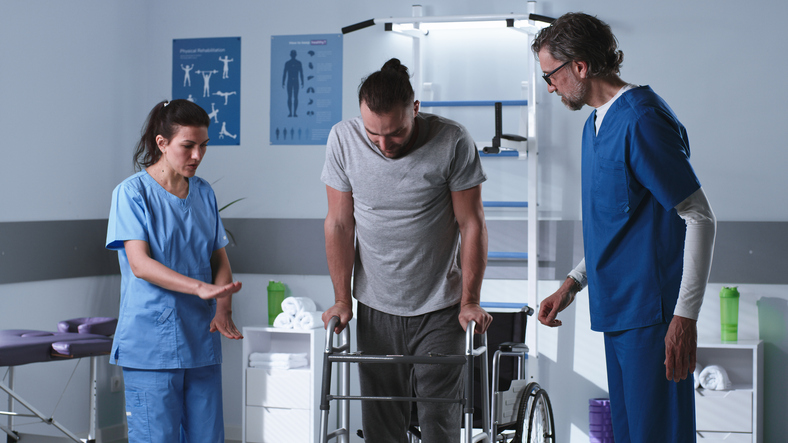
Support Patients by Learning About Mental Health in Physiotherapy Assistant Training
A well-rounded physiotherapy assistant course won’t neglect the importance of supporting a patient’s mental and emotional well-being throughout treatment. In fact, improved mental health is one of the most important results of successful physiotherapy interventions. Physiotherapy reduces pain, which improves mood and a patient’s ability to live a full life. This can certainly improve mental health. Physiotherapy also requires patients to exercise, which has many established mental health benefits like an increase in happy brain chemicals, decreased stress levels, and improved sleep. Physiotherapy can also offer patients a sense of hope, which can help them reverse the negative mental health effects of injury, chronic pain, or musculoskeletal conditions. Get ready to change the lives of patients when you complete the physiotherapist assistant diploma at Medix College.
Ready to start a physiotherapy assistant program?
Contact Medix College to learn more!
3 Ways to Encourage Client Positivity in Your Physiotherapy Assistant Career
March 22, 2019March 22, 2019

Positive thinking is an essential part of the recovery and rehabilitation process for people undergoing physiotherapy. In fact, a recent study of 1,000 patients undergoing physiotherapy for shoulder pain found that those who expected their physiotherapy treatment to help were more likely to recover than those who expected little or no benefit from treatment.
For anybody working in physiotherapy, such studies simply reinforce what many people know to be intuitively true: client positivity can have an impact on treatment outcomes. If you’re considering a career as a physiotherapy assistant, helping clients stay positive can help them reap the full benefits of their treatment. Here’s how you can promote client positivity during your physiotherapy assistant career.
1. Goals Are Helpful for Keeping Clients Motivated to Continue Their Physiotherapy
People who are in severe pain or who have just suffered a serious injury may have difficulty seeing much to be positive about. Negative thinking can cloud their judgement and make them feel like even physiotherapy is “pointless.” This negative thinking can make it difficult for clients to stay motivated to continue physiotherapy, which in turn can lead to poor treatment outcomes.
A good way to combat negative thinking is to identify specific challenges and then set goals to overcome them. While a client’s treatment plan is developed primarily by the physiotherapist, as a physiotherapy assistant you can help participate in program planning by providing the physiotherapist with feedback about the client’s progress. This feedback can help the physiotherapist develop goals that are specific and achievable, like having a client be able to perform a certain exercise. If goals are specific, then clients have something concrete they can look forward to and accomplish, which will help them stay motivated.
Specific goals, like completing certain exercises, can help clients stay motivated
2. Share Stories of Success During Your Physiotherapy Assistant Career
Clients who are trying to overcome pain or injury may feel isolated and like no one can truly understand their situation. One effective way of overcoming this attitude is to share stories of people who have been in similar situations and who have successfully recovered.
After completing your physiotherapy assistant program, you can share success stories to inspire clients. A good idea is to avoid talking about other clients you have worked with so as to not inadvertently violate confidentiality and privacy rules. Instead, you can go online and search for examples of how people have used positivity to overcome serious injuries and pain. Your workplace may even provide literature with examples of success stories that you can give clients.
Sharing success stories with clients can help them feel like recovery is possible
3. Ensure Your Client Has a Support Team to Help Them Along Through Physiotherapy
Part of your physiotherapy assistant career may include talking to a client’s family members. You can talk to family members about the importance of helping their loved one stay positive throughout the treatment process and how they can act as the client’s support team. With a support team behind them, clients are much less likely to feel as though they are going through physiotherapy alone.
Having a support team not only helps create a positive atmosphere around the client, but it also creates a level of accountability. Wanting to please a loved one can be a highly motivating factor for many clients. If they know that their family is by their side and monitoring their progress, they will often feel as though they need to put as much effort into their recovery as possible so as to not let their loved ones down.
Are you ready for an exciting new career?
Contact Medix College to learn about our physiotherapy assistant school.
4 Facts About Thermotherapy for Students in Physiotherapy Assistant Training
October 12, 2018Thermotherapy is one of many therapeutic tools used to alleviate muscle pain. This method consists of applying heat to the body externally in order to reduce feelings of discomfort and help ease the pain of injuries. It is an effective method that has been used for centuries, as it provides several benefits to the body.
For those eager to pursue a career in the field, here is a look at five facts that future graduates should know when dealing with thermotherapy.
How Exactly Does Thermotherapy Work?
Heat alleviates various muscle ailments and inflammations by calming and soothing the painful area as the body reaches a certain temperature. Thermotherapy causes blood vessels to dilate, which assists in oxygen transportation to the organs, helping with cell tissue healing. Due to this process, muscles become more relaxed and nervous tension is reduced.
1. Pros with Physiotherapy Assisting Training Know When Thermotherapy Is Beneficial
Students in physiotherapy assisting training should be aware of certain injuries that will not benefit from heat. For example, infections or fresh injuries should be soothed by ice rather than heat. A fresh injury is when the tissue has recently been damaged and begins to inflame for a few days. Students can tell that an injury is fresh if the area is sensitive to touch, if the skin is hot and red, and/or if swelling is present.
2. Thermotherapy Serves a Distinct Purpose on the Body
The primary purpose of applying heat as a form of therapy is relaxation, comfort, reassurance, and reducing pain for several kinds of persistent aches such as stiffness, cramping, and/or sensitivity. These types of injuries can result from over-exerting certain muscles during exercises or other activities, pain from muscle disorders such as fibromyalgia, muscle strains and knots, and more.
3. There Are Different Methods Associated With Heat Therapy
When a situation does call for heat therapy, there are two common ways to aid injured areas: local and systemic. Local heating consists of applying heat only to a specific place in the body, usually where the injury or discomfort has occurred, by using hot packs, towels, wraps, or other materials. In contrast, systemic heating consists of increasing the temperature of the whole body and can be a helpful factor in situations where emotional stress, soreness, or muscle knots are the main cause for concern. Saunas, steam and whirlpool baths, and more get heat into the deeper tissues and are effective in raising the body’s internal temperature.
Direct heat only targets the desired area that is causing physical pain
4. Thermotherapy Can Provide a Range of Additional Benefits
Graduates from a physiotherapy assistant college are aware of the benefits thermotherapy can provide. These benefits can include a reduction in muscles spasms and an increase in white blood cells that can stimulate immune system responses.
Thermotherapy can also help with problems such as headaches, menstrual pain, and digestive disorders. As a result, thermotherapy is used by many for many different reasons.
Are you interested in physiotherapy assistant training?
Contact Medix College for more information regarding our programs.
4 of the Most Common Sports Injuries Physiotherapy Assisting Program Grads Should Know
September 14, 2018
For many professional athletes, the risk of developing an injury during training and in-game activity is high, especially in sports that require contact. Many different kinds of injuries can occur, with some being more frequent for certain sports than for others.Consider these four injuries athletes are likely to endure during physical activity, as well as how to approach injuries effectively while working under the supervision of a physiotherapist.
1. Ankle Sprains Occur Easily and Often During Prolonged Activity
Ankle sprains are a pretty common injury among athletes. This lower leg injury occurs frequently under physical activity, particularly during running sports such as basketball, soccer, and football. An ankle can get sprained when someone slips, gets stomped on, or a lot of pressure is placed on the ligament in an awkward position. There are different levels of severity, ranging from grades 1 to 3, which depend on the speed and force used in the incident.
Wrapping an ankle sprain helps prevent swelling
A grade 1 sprain is the least severe and only requires light stretching. A grade 2 sprain involves partial tearing of the ligament while grade 3 indicates the most severe type of damage. In the latter, the ligament is completely torn and there is a high degree of instability when rotating the ankle joint.
2. A Hamstring Strain / Pull Is Another Common Leg Injury
An injury to the hamstring is another ailment that occurs during active running in sports and can be quite incapacitating. The hamstring consists of three muscles that are located behind the knee and quadriceps. The strain or pull occurs with an overuse of the muscle and can take a long time to heal.
Warming up the muscle is an effective way to improve elasticity
With an injured hamstring, some may experience pain and bruising and an inability to perform any leg movement activities. Students in a physiotherapy assisting program may know that physiotherapists recommend warming up and massaging the area before any physical exertion in order to limit any unforeseen muscle strain or pull.
3. Shoulder Injuries Are Often Seen by Professionals from Physiotherapy Assisting College
These injuries likely occur during excess contact or rotational sports such as hockey, football, rugby, tennis, or boxing. Constant contact or movements such as throwing a football or throwing punches places an abnormal amount of pressure on the rotator cuff and area of the shoulder. It is this pressure that can sometimes lead to shoulder injuries.
Dislocation is fairly common as a result of contact, either with another player or a collision with the ground, and occurs when the bone pops out of the socket. If this happens, athletes will be in a lot of pain and the injury will be clearly visible.
Graduates of a physiotherapy assisting college may know that physiotherapists advise individuals to participate in exercises that strengthen the shoulder area as weak rotator cuff muscles are more prone to shoulder separation. In a minor incidence of a dislocated shoulder, the upper arm bone will pop back in on its own, but medical attention is required in more severe cases.
4. Lower Back Strains Are More Common Than Most People Think
An injury not many people consider when it comes to sports is lower back, or musculoligamentous, strains. This type of injury can range from pre-existing problems, trauma inflicted in the area, or other factors that limit athletes and active individuals significantly. The injury affects an individual’s soft tissue in the spine, nerves, tendons, and blood vessels.
Advanced treatments may be needed if the sudden movement causing the injury is severe and could sideline an athlete indefinitely or for a prolonged period of time.
Are you interested in getting the training you need for a rewarding career?
Contact Medix College for more information on acquiring a rehabilitation physiotherapy assistant diploma .
Neurological Rehabilitation: A Quick Intro for Students in Physiotherapy Assisting Training
June 22, 2018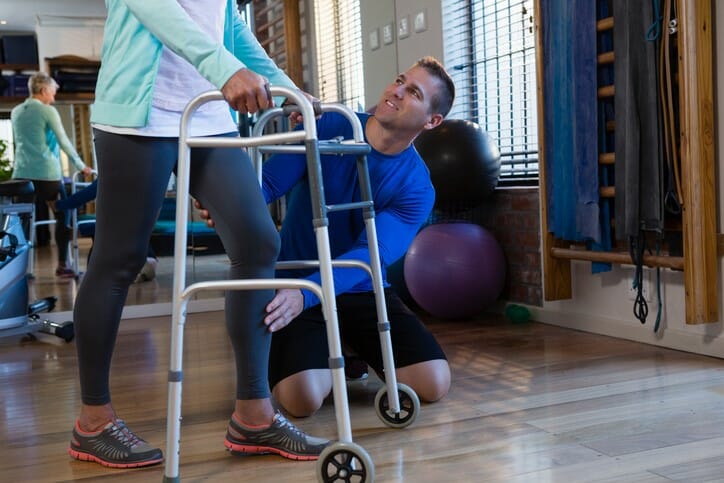
The amazing things that our body can do are often taken for granted. Consider the fingers being used to type on a keyboard, the arms used to lift food to our mouths, and the legs which allow us to walk around freely. It’s only when limitations are put on these bodily movements that we fully recognize our reliance on them. Rehabilitation is about trying to restore the body to a healthy condition, but neurological damage requires a slightly different approach.
Such conditions damage the body’s nervous system, so a prior assessment is needed to establish the patient’s overall brain function. Physiotherapists then use their skills to develop a neurological rehabilitation program which can improve body movement and reduce the symptoms of the condition. Physiotherapy assistants working under the direction of a physiotherapist can help with the implementation of these programs. This has the potential to significantly relieve the daily discomfort of patients, so let’s take a closer look at what this topic involves.
Neurological Rehabilitation Is Used to Aid Patients with Many Common Conditions
A wide variety of injuries, disorders, and diseases can affect the body’s nervous system, which consists of the brain, spinal cord, and the nerves themselves. These can range from mildly irritating to very serious conditions. Brain and spinal cord injury seriously affects movement and regularly occurs after high impact collisions such as road crashes. Damage to the nervous system can also be caused by strokes and blood clots.
Graduates of physiotherapy assisting school may also be instructed to use neurological rehabilitation on patients with Parkinson’s disease. Multiple sclerosis and Alzheimer’s are also common disorders which negatively affect the nervous system. Physiotherapists and the physiotherapy assistants working under their supervision therefore work with many different patients with very diverse conditions.
Physical Problems which May Prompt a Trip to the Physio Clinic
The symptoms experienced by patients with any of the above conditions do of course vary. However, the following are some of the common reasons why people seek neurological rehabilitation:
• Becoming dizzy or imbalanced
• Finding it difficult to move around
• Requiring regular breaks while walking
Difficulty with movement may also be spotted in a variety of other settings, such as during normal family activities. Thankfully, neurological rehabilitation can be used to help ease such symptoms and provide freer movement.
Neurological rehabilitation can improve a client’s strength and conditioning
How to Improve a Client’s Bodily Movement During a Physiotherapy Assistant Career
Neurological rehabilitation generally focuses on a few key objectives. It’s used during a physiotherapy assistant career to improve the patient’s balance and ability to walk, increase their strength and conditioning, and solve possible orthopaedic problems. Professionals can choose from a lot of different treatment types, including Bobath Therapy or Neuro-Development Treatment.
Re-learning the correct walking technique is seen as very important in neurological rehabilitation. Professionals help clients to improve their balance and speed while walking over time, and this also prevents injuries linked with the use of incorrect technique. Modern equipment is also being used in many physiotherapy clinics to help patients. An anti-gravity treadmill, for example, offers a safe environment to learn correct walking technique, because it takes the weight off sore leg joints. This sort of technology can offer exciting benefits for clients who experience pain every day because of their condition.
Help clients to become more active as a physiotherapy assistant
Help those in need after physiotherapy assisting training.
Find out more about our extensive diploma program at Medix College.
3 Things for Students in Physiotherapy Assisting Courses to Know About Carpal Tunnel
May 30, 2018Affecting office workers and video gamers everywhere, carpal tunnel syndrome is a sneaky condition that can lead to weakness, discomfort, and limited mobility in the fingers, hands, and wrists of those individuals who have it. It’s the kind of condition that is often not especially serious, but can be very frustrating as an individual awaits a return to normal feeling and function.
Fortunately, physiotherapy can be of assistance to individuals with carpal tunnel, with regular exercises and treatments able to help speed up the process of healing. Curious about how physiotherapy assistants might help with this process? Here’s what you need to know.
Carpal Tunnel Is a Repetitive Stress Injury, Which Complicates Healing & Living
Carpal tunnel syndrome is a condition arising from the median nerve (which runs through the wrist) getting compressed, and can affect feeling in the arm, wrist, hand, and fingers. Common symptoms include sensations of weakness, pain, tingling, or numbness, typically worsening over time. Left untreated long enough, there can even be a gradual atrophy of muscles in the hands or thumbs.
The cause of carpal tunnel, frequently, is repetitive activities that lead to swelling and stress. For some, working all day with a computer keyboard and mouse can be enough to cause it. Other activities that can cause it include playing video games for prolonged periods, construction work, or other tasks or pastimes that involve prolonged wrist movement. Activities that involve prolonged wrist movement, like video gaming, can cause carpal tunnel syndrome
Anything that interrupts a person’s normal work or leisure time is likely to be more difficult to recover from. They will want to or need to get back to the activity in question as quickly as possible, and might try to skip steps in their recovery or be unable to give up the aggravating activity at all. For graduates of physiotherapy assistant school, this might mean that extra effort needs to be made to educate clients about the importance of committing as much as possible to their recovery effort.
Graduates of Physiotherapy Assisting Courses Can Assist With Recovery Exercises
It’s possible to promote healing of carpal tunnel, or at least get rid of the worst of the symptoms, by engaging in physiotherapy stretching and exercises. Graduates of physiotherapy assisting courses are often involved in assisting clients with these activities, working under the direction of a physiotherapist to ensure proper form is observed for optimal healing.
It’s the kind of work that rewards familiarity, which is a big part of why the best training programs will have a large focus on practical work with the techniques really used in physiotherapy centers. If you want to be able to provide the best care possible to clients with carpal tunnel and other common physical ailments, this type of background will be ideal.

Person flexing fingers
Extreme Cases of Carpal Tunnel Can Require Surgical Intervention
When carpal tunnel gets serious, surgery may be required to restore function and eliminate pain. The surgery involves cutting a ligament in the wrist to reduce pressure on the medial nerve, and typically doesn’t require general anaesthesia or an overnight stay. Pain from carpal tunnel often vanishes soon after surgery, though it can take months to recover from the procedure itself. This process tends to involve the ligaments growing back together a little less tightly, and patients may experience additional weakness, nerve pain, or stiffness during this time.
Though carpal tunnel surgery is one of the most common medical procedures, it’s still a serious undertaking, so patients would do well to avoid it when possible. Learning how to contribute to physiotherapy treatment plans can help you help others to avoid this surgery when possible, offering them a quicker path to recovery and function.
Do you want to learn how to help clients with a number of painful conditions?
Get the skills you need through Medix College’s physiotherapy assistant program!
Techniques to Tackle Driver’s Back and Neck Pain Over Your Physiotherapy Assistant Training
May 11, 2018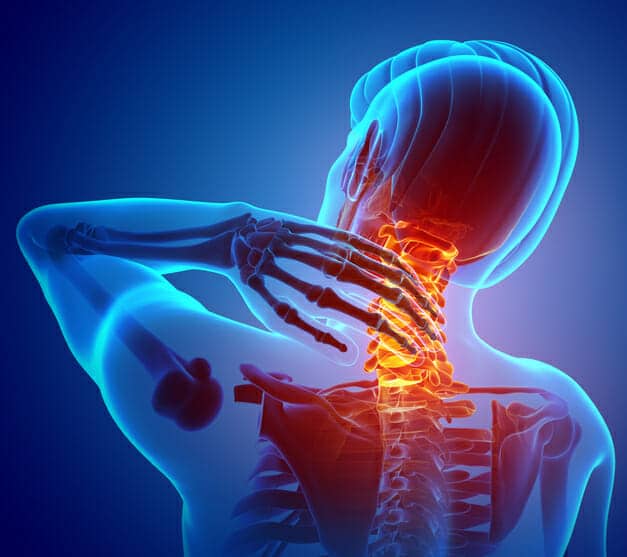 Driving for long periods of time can be grueling enough. To make matters worse, it can lead to severe neck and back pain. Stiff necks and backs can likely be caused by a driver’s bad seating posture, or vibrations and shaking on rocky or uneven roads. Sometimes a driver’s seat will be too low. Other times, they may strain their necks by leaning forward too much because their seat has been adjusted far away from the gas and brake pedals. Whatever the reason, there are a few exercises and stretches that can help.
Driving for long periods of time can be grueling enough. To make matters worse, it can lead to severe neck and back pain. Stiff necks and backs can likely be caused by a driver’s bad seating posture, or vibrations and shaking on rocky or uneven roads. Sometimes a driver’s seat will be too low. Other times, they may strain their necks by leaning forward too much because their seat has been adjusted far away from the gas and brake pedals. Whatever the reason, there are a few exercises and stretches that can help.
Read on to find out how physiotherapy assistants, working under the supervision of a physiotherapist, can help clients. Neck Stretches and Exercises Can Relieve Pain and Improve Flexibility Stretching and strengthening the neck are great ways to not only get rid of pain, but also improve flexibility, which can help with reducing the chances of future stiffness. For neck stretches, physiotherapy assistants can help clients with techniques such as behind the back and seated neck release stretches.
Behind the back neck stretches are done while standing, keeping both arms behind the back, and the hands below the hips. Clients then need to gently pull one arm a little further away. During your physiotherapy assistant career, you can help physiotherapists by aiding clients with the backward motion of moving their arms away from their body. You can also help clients keep their arms perfectly straight so they can get a good stretch. Seated neck release stretches are a bit easier, and can be done on a chair or yoga mat. Clients essentially pull their head to the side with a little pressure to achieve the stretch.
Some good exercises for stiff necks include chin tucks and cervical rotation. Cervical rotations can double as a stretching technique by rotating the neck from side to side. Chin tucks involve bringing the chin as far back towards the throat as possible, which can help clients strengthen their neck muscles. You can help clients by holding their shoulders and making sure they are seated properly to ensure only their necks are moving.
Upper Trap Exercises Can Also Help Clients Improve Posture
Maintaining good posture can be crucial to preventing a stiff neck and back while on the road for long periods of time. The upper trapezius muscle is particularly important as it keeps the shoulders and upper body stable. Developing strong upper traps can then improve a client’s posture by better supporting the neck and upper body.
Clients can activate their upper traps by placing one hand on their hip while holding a dumbbell with the other. Clients can then shrug their shoulder upwards and backwards while holding the dumbbell outwards a bit. Clients may need help keeping their body and elbows straight during this exercise, particularly if their trap and shoulder muscles are weak, so be ready to help provide support.
Help with Upper and Lower Back Exercises After Your Physiotherapy Assisting Training
To help strengthen their upper back, clients can do bow and arrow exercises while standing or sitting, and using resistance loops. They do this by pulling on one side of the loop as far back towards their shoulder as possible, just like pulling back the arrow on a bow. You can help clients by keeping their arms and back straight to ensure they get the full effect of the exercise.
For a good lower back exercise, clients can stand with their legs apart, raise their arms above their heads, and lean forward while pushing out their backsides. You can help support clients with weak lower back strength by using a chair as a prop.
These are only a few of the techniques you might encounter during physiotherapy assisting training. There’s still much more to learn!
Are you eager to start your career as a physiotherapy assistant?
Join Medix College and earn your physiotherapy assistant diploma today!
Common Knee Injuries You Might See During Your Physiotherapy Assistant Career
January 26, 2018
The ubiquity of knee injuries is firmly recognized by the physiotherapy profession. Being the juncture of two major leg bones, it is a natural ‘pain point’ for many. A recent study indicated that the issue of knee injuries is not just confined to older individuals, with a rise in serious knee injuries being reported amongst children and teenagers engaged in sporting activities as well. As a result, you could encounter many different knee injuries as you work with clients as a physiotherapy assistant.
Here are some of the different types of knee injuries you might see throughout your career.
Fracture of the Patella (Kneecap): A Common Sight Over a Physiotherapy Assistant Career
The patella, also known as the kneecap, acts as the frontline protector of the knee. A hard, spherical bone structure, it is prominently positioned where the femur and tibia meet at the knee joint. Understandably, this positioning means that many high velocity impacts that the knee may be subject to—such as those suffered after a trip or forward impact—will likely be visited upon the patella.
Patella fractures can be straightforward two piece fractures, or multiple in nature, depending on the impact sustained. Physiotherapy after the initial healing of the fracture—which typically lasts several weeks in a cast—will seek to decrease stiffness and return a full range of motion to the knee. Under the supervision of a physiotherapist, it could be a task that you help with during your physiotherapy assistant career.
Quadriceps and Patellar Tendon Tears in the Knee
Just like any connective tissue in the human body, knee tendons can be subjected to strain and tearing if sufficient force is applied to them. The tendons most commonly injured are the quadriceps and patellar, which form connective bonds directly above and below the patella.
Tendon tears are common injuries around the body, but occur regularly in the knee
These kinds of injuries are common amongst older individuals, particularly those involved in strenuous sporting activity that involves jumping like soccer or basketball. Once initial treatment has been applied and swelling has abated, you may see treatments like straight-leg raises and other leg strengthening exercises applied for this kind of injury.
ACL Injuries Are Well Known to Physiotherapy Assistant Diploma Holders
As one of the best known kinds of injuries that can affect the knee, anterior cruciate ligament (ACL) injuries will be familiar to physiotherapy assistant diploma holders who deal with sports injuries under the supervision of a physiotherapist. Often reported when an athlete hits the ground while changing direction, it is often accompanied by a distinctive ‘popping’ sound as the ligament (which is situated just below the patella) gives way, significantly affecting the range of forward and backward motions the leg can perform.
ACL incidents have acquired a notorious reputation amongst athletes in recent years
Severity can vary from a slight sprain to a full tear that requires surgery. Physiotherapy applied after surgery is typically gradual, and will focus on slowly building the strength and supportive quality of the repaired ligament.
Knee Dislocations: Commonly of the Patella
A dislocation occurs in the knee when an important part of the knee is knocked out of place. This is commonly the patella, which can find itself out of position with its supportive femoral groove due to an impact. However, dislocations can also occur when the femur and tibia are pushed out of alignment as well.
A dislocation will commonly result in pain when attempting to walk or sit, and will often require a medical professional to physically re-position what is out of place, a process that is known as ‘reduction’. On occasion, a dislocation can continually occur due to the femoral groove and supportive tissue developing a natural misalignment, a situation which can call for surgery. Physical therapy after a once-off dislocation will often involve stretching as well as the use of a supportive brace for a period of time.
Do you want to become an effective professional focussed on treatment and relieving pain?
Contact Medix College today to begin your journey at physiotherapy assistant college.




